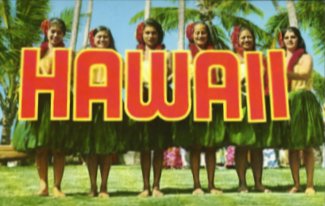The earliest photographs of Hawaiʻi residents were the daguerreotypes made of Timoteo Haʻalilio and William Richards when the two men were in Paris on a diplomatic mission in 1843. (Schmitt)
Later, on the US continent, George Eastman formed a photography company. In naming his company, he wanted his trademark short and “incapable of being misspelled to an extent that will destroy its identity.” And, “it must mean nothing.”
Eastman liked the letter ‘K;’ “it seemed a strong, incisive sort of letter. Therefore, the word I wanted had to start with ‘K.’ Then it became a question of trying out a great number of combinations of letters that made words starting and ending with ‘K.’ The word ‘Kodak’ is the result”. (Eastman; Kiplinger)
In 1888, the Eastman Kodak camera was placed on the market, with the slogan, “You press the button – we do the rest.” This was the birth of snapshot photography, as millions of amateur picture-takers know it today. (Kodak)
In Hawaiʻi, amateur photography began to flourish in the late-1880s. The first retail establishments with camera counters were two Fort Street drug stores, Hollister & Co. and Benson, Smith & Co., both in 1887.
The first business establishment to advertise “printing done for amateurs” was the studio of Theo P Severin, on December 17, 1888. The first camera club was the Hawaiian Camera Club, organized January 10, 1889, with C Hedemann as its president. (Schmitt)
All of this set the stage for a long-time (although now gone) iconic outdoor stage at Waikīkī, that also ended up with a travelling road show on Dillingham’s OR&L.
Intent on selling film, in 1937, Fritz Herman, then-vice president and manager of Kodak Hawaiʻi, founded the Kodak Hula Show. This allowed visitors to take pictures of hula shows outdoors in the daylight (rather than at the too-dark venues of the nighttime lūʻau.)
In addition, Herman wanted dancers to wear ti-leaf skirts and pose in natural settings, rather than the typical nighttime indoor wardrobe of cellophane skirts and paper lei. (Desmond)
The first show, on the lawn behind the beach at San Souci, featured five dancers, four musicians and an audience of 100. The popular shows later expanded to 20 female and six male performers, 15 musicians, two chanters and audiences of 3,000 each week.
For many tourists, their only exposure to Hawaiian dance was the Kodak Hula Show. And, it was free.
The Kodak Hula Show began with the introduction of the fictionalized character “King Kali,” and through the course of a performance a moderator would explain to the visitors the history of various dances, costumes, gestures, and at predetermined moments, dancers would form a display giving the audience ample opportunity to take pictures. (sfsu-edu)
The classic “Kodak moment” happened when visitors were invited to aim their cameras at the cast as the performers held the huge H-A-W-A-I-I red and yellow letters. The P-A-U sign closed each performance.
According to Kodak officials, only Disneyland and Disney World sold more film than the Kodak Hula Show. (sun-sentinel)
Seeking to expand passenger travel, Oʻahu Railway and Land Company expanded railway cut across the island, serving several sugar and pineapple plantations, and the popular Haleiwa Hotel.
They even included a “Kodak Camera Train” (associated with the Hula Show) for Sunday trips to Haleiwa for picture-taking.
During WW II, there were no tourists, but hundreds of thousands of military personnel passed through the islands. The show worked with the military. However, “You couldn’t even take photos of the beaches in those days.” (Bartlett)
In 1969, the Kodak Company moved the Hula Show from the beach area to an amphitheater adjacent to the Waikīkī Shell in Kapiʻolani Park.
The show grew from once a week in the summer to four times a week year-round. The hula show regularly drew capacity crowds from nearby Waikīkī hotels for its 10 am shows.
It was so popular that audiences were advised to arrive at least 30-minutes early to find a seat. (sun-sentinel)
In July 1999, the Hogan Family Foundation took over operation of the Hawaiian tradition and renamed it the Pleasant Hawaiian Hula Show (Kodak film was still for sale in a kiosk beside the bleachers.)
The Foundation sponsored the Hula Show for three years at a cost of over $500,000 annually.
In 2002, the Foundation’s Board of Directors felt that it would be better to use these funds towards educational programs in the islands.
After months of looking for a suitable sponsor to assume the operation of the Hula Show, the show was officially closed on September 26, 2002. (HoganFoundation)
An estimated 20-million people had seen the show from 1937-2002. (Harada)















